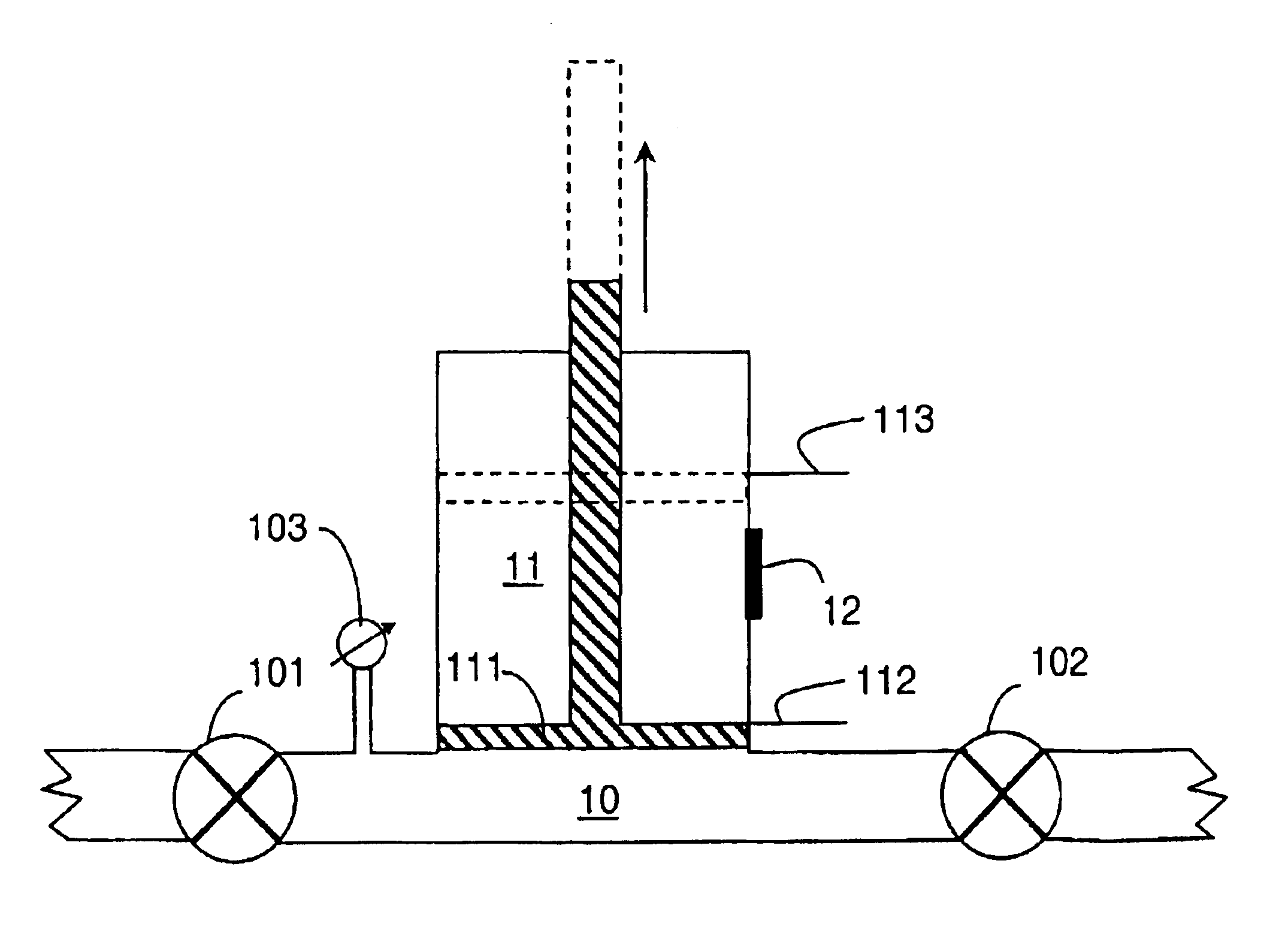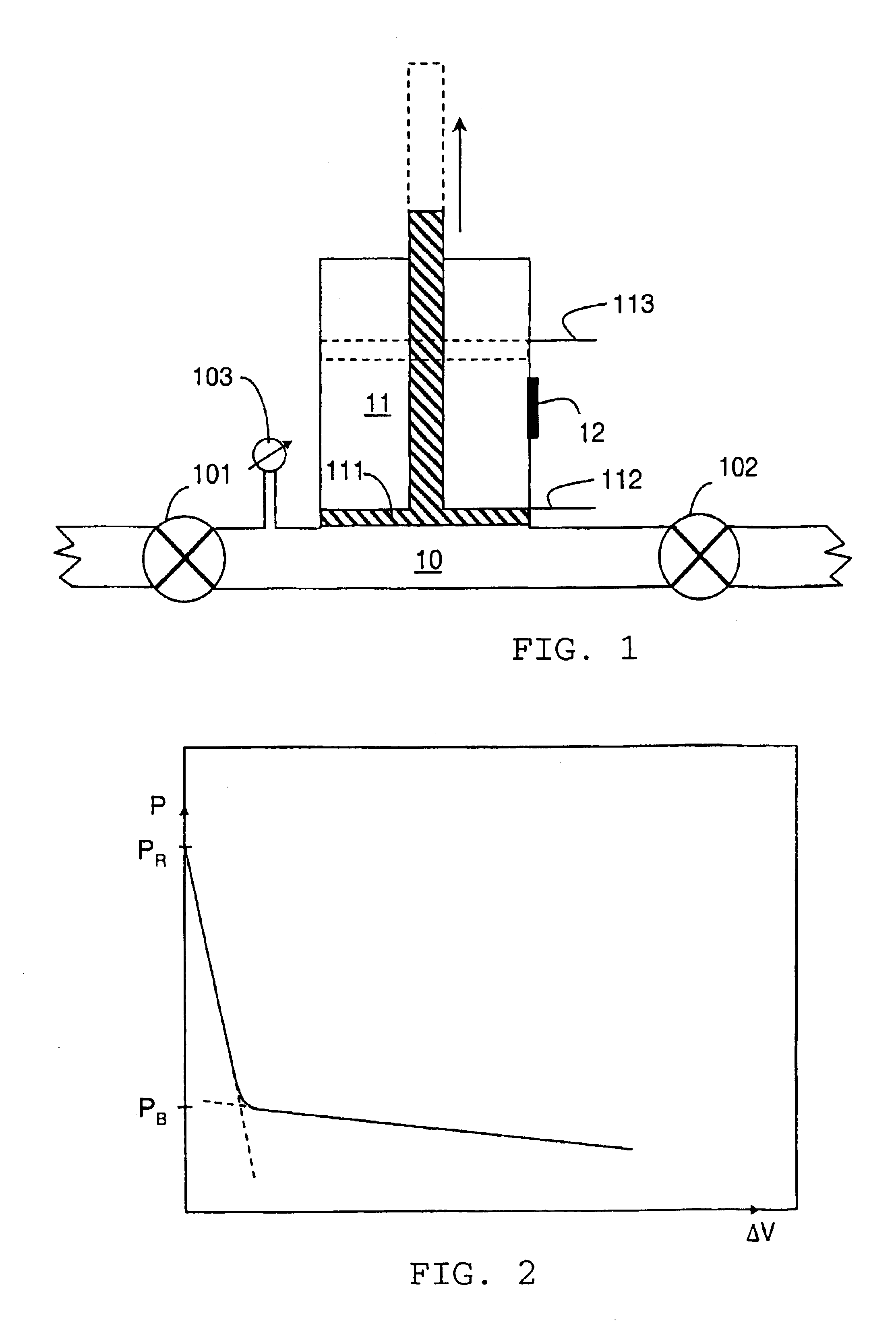Hydrogen sulphide detection method and apparatus
a technology of hydrogen sulphide and detection method, applied in the direction of survey, instruments, borehole/well accessories, etc., can solve the problems of sulphide content, critical safety problems, and significant production problems
- Summary
- Abstract
- Description
- Claims
- Application Information
AI Technical Summary
Benefits of technology
Problems solved by technology
Method used
Image
Examples
Embodiment Construction
[0040]Two methods are described to determine the concentration of hydrogen sulphide in liquid and gas samples captured by a wireline fluid sampling tool.
(i) Equilibrium Headspace Gas Analysis
[0041]FIG. 1 shows a schematic of a part of the sample flow line 10 of a wireline formation sampling tool. This portion of the fluid sample flow line can be hydraulically isolated from the remainder of the tool's flow lines by means of valves 101 and 102. The sealable portion of the flow line is connected to a chamber 11, which contains a piston 111 that may be retracted into the chamber in a controlled manner. The initial location of the piston is 112 where the face of the piston is flush with the wall of the sample flow line 10. The hydrostatic pressure PH of the fluid sample in the sealed flow line can be measured by the pressure transducer 103. The volume of fluid sealed between valves 101 and 102 is denoted VI while the expansion volume of the chamber 11 is denoted VC. The total volume of t...
PUM
| Property | Measurement | Unit |
|---|---|---|
| pH | aaaaa | aaaaa |
| concentration | aaaaa | aaaaa |
| temperature | aaaaa | aaaaa |
Abstract
Description
Claims
Application Information
 Login to View More
Login to View More - R&D
- Intellectual Property
- Life Sciences
- Materials
- Tech Scout
- Unparalleled Data Quality
- Higher Quality Content
- 60% Fewer Hallucinations
Browse by: Latest US Patents, China's latest patents, Technical Efficacy Thesaurus, Application Domain, Technology Topic, Popular Technical Reports.
© 2025 PatSnap. All rights reserved.Legal|Privacy policy|Modern Slavery Act Transparency Statement|Sitemap|About US| Contact US: help@patsnap.com



